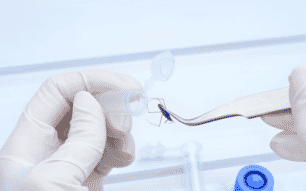The study also revealed that less than half the stores posted mercury warning signs advising mothers and most women not to eat swordfish and other high-mercury fish.
The undercover testing, led by the non-profit public health project GotMercury.org analyzed 98 samples of swordfish, tuna, salmon and sushi for mercury content from 61 retailers and restaurants California. All fish samples contained detectable amounts of mercury.
“People need to know that dangerous toxins are contained in certain fish sold at the seafood counter,” said Buffy Martin Tarbox, Campaign Coordinator for GotMerucry.org, based in Forest Knolls, CA. “A lack of mercury-in-seafood warning signs and information is keeping the public, especially women and children, at risk of mercury exposure.”
A key finding was that 81 per cent of swordfish samples registered high levels of mercury, and nine of those swordfish pieces were more than two hundred times over the maximum acceptable levels set by federal food safety officials.
The testing also showed that 20 per cent of the tuna sushi samples were over 1 part per million (ppm), a level that may be harmful to women and children who eat tuna.
The release of the GotMercury.org report prompted a Washington D.C. lobby and marketing organization that represents the fishing industry to issue a press release to members of the media encouraging them to not publish stories about the results.
“The fishing industry does not want the public to learn the truth about high mercury levels in seafood and will even sink so low to attempt to intimidate the media to not publish reports about high-mercury fish,” said Martin Tarbox.
A full third of the fish samples were found to contain levels of mercury exceeding the US Food and Drug Administration’s (FDA) mercury action level of 1 part per million. Twenty-six out of 32 swordfish samples contained mercury levels well above the FDA’s action level.
Tuna ranked second in high mercury levels, with most samples over 0.5 ppm, the mercury action level established by the majority of developed nations and the Environmental Protection Agency (EPA) for recreational fish. The EPA has set a mercury action level at 0.5 ppm for recreational fish, half the level of the FDA standard for commercial fish.
GotMercury.org is calling upon lawmakers and retailers who sell fish to do the right thing and provide their customers with mercury-in-seafood information to help fish eaters make informed choices and protect their health.
Only half of the stores included in this study had mercury-in-seafood advisory signs posted to alert customers about the hazards of high-mercury seafood. GotMercury.org has been seeking legislative action at the state and federal level to require all seafood sellers post mercury-in-fish warning signs.
The California testing was conducted as part of national effort initiated by GotMercury.org called Operation Safe Seafood to randomly test mercury levels in fish. Similar investigations conducted in Florida, New York, Iowa, and Nevada found on average, 35 percent of fish being sold in grocery stores exceeded the FDA’s mercury action level.
High Levels Of Mercury In Tuna & Swordfish
US - A statewide investigation of mercury levels in supermarket fish and sushi found alarming levels of the neurotoxin in many samples purchased at grocers and restaurants across California.

